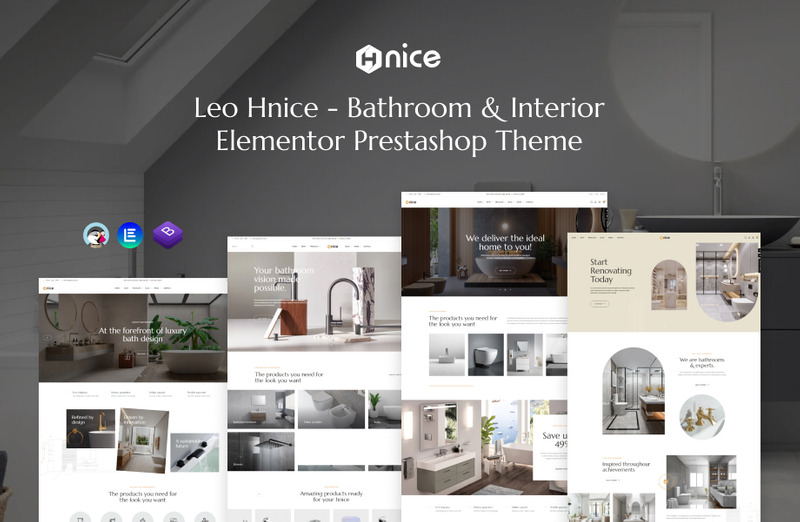
In today’s digital age, creating an interactive and engaging website is crucial for attracting and retaining visitors. Users expect more than just static information; they seek dynamic and immersive experiences that cater to their specific needs and preferences. For a bathroom renovation website, interactivity can significantly enhance the user experience, transforming a simple browsing session into an engaging journey. This not only helps in capturing the interest of potential clients but also assists them in visualising their projects, making informed decisions, and engaging more deeply with your brand.
An interactive website allows users to participate actively in the process rather than passively consume information. This active participation can be achieved through various innovative features and tools that cater to the specific interests and requirements of the user when users can interact with the website, whether by designing their own bathroom, taking a style quiz, or participating in a live chat with a consultant, they are more likely to feel a personal connection with your brand. This connection can foster trust and loyalty, essential components for converting visitors into clients and ensuring long-term engagement.
For a bathroom renovation website, interactivity is not just a bonus but a necessity. The renovation process can be complex and overwhelming, involving numerous decisions about design, materials, and budget. Interactive elements can simplify this process by providing users with the tools and information they need to make confident choices. For example, a 3D design visualiser allows users to experiment with different layouts and styles, helping them to see the potential outcomes of their choices before committing. Similarly, cost calculators and product comparison tools can help users manage their budgets and select the best products for their needs.
Interactivity also enhances user engagement by making the website experience more enjoyable and memorable. Features like virtual reality tours, augmented reality showrooms, and interactive blogs and tutorials can captivate users’ attention and keep them on your site longer. The longer users stay and interact with your site, the more likely they are to explore your offerings and ultimately decide to engage in your services.
Here are several strategies to make a bathroom renovation website interactive:
1. Interactive Design Tools
One of the most effective ways to engage users is by offering interactive design tools. These can include:
- 3D Design Visualizers: Allow users to create and visualise their bathroom designs in 3D. Tools like these let users choose different elements (tiles, fixtures, colours) and see how they look together in a virtual space.
- Room Planners: These tools enable users to draw their bathroom layout, select and place different fixtures, and modify dimensions to suit their specific needs.
2. Virtual Reality (VR) and Augmented Reality (AR)
VR and AR technologies can provide immersive experiences for users:
- AR Showrooms: Allow users to use their smartphones or tablets to see how different products (like vanities or bathtubs) would look in their bathroom space.
- VR Tours: Offer virtual tours of completed renovation projects, giving users a realistic view of the quality and style of your work.
3. Interactive Quizzes and Surveys
Help users discover their style preferences and renovation needs through engaging quizzes and surveys:
- Style Quizzes: Provide quizzes that help users identify their preferred bathroom style (e.g., modern, traditional, rustic) based on their choices.
- Needs Assessment Surveys: Users can answer questions about their space, budget, and functionality requirements to receive personalised recommendations.
4. Live Chat and Video Consultations
Facilitate real-time communication with potential clients:
- Live Chat: Integrate a live chat feature to answer questions, provide instant support, and guide users through the renovation process.
- Video Consultations: Offer virtual consultations where users can discuss their projects with experts, show their current bathroom via video, and receive tailored advice.
5. User-Generated Content and Reviews
Encourage user interaction and build trust through user-generated content:
- Project Galleries: Allow users to upload photos of their completed renovations using your products and share their experiences.
- Reviews and Testimonials: Feature customer reviews and testimonials prominently to provide social proof and build credibility.
6. Dynamic Product Filters and Comparisons
Help users find the perfect products easily:
- Advanced Filters: Implement dynamic filters that allow users to sort products by various criteria, such as price, style, colour, and brand.
- Comparison Tools: Enable users to compare multiple products side by side, highlighting key features, pros, and cons.
7. Interactive Blogs and Tutorials
Provide valuable content in an engaging format:
- How-To Guides: Create step-by-step tutorials with interactive elements like clickable tabs, expandable sections, and video embeds.
- Blogs with Comments: Allow users to comment on blog posts, ask questions, and engage in discussions about renovation tips and trends.
8. Engaging Social Media Integration
Leverage the power of social media to enhance user interaction:
- Social Media Feeds: Embed live social media feeds (e.g., Instagram, Pinterest) showcasing renovation inspiration and user projects.
- Share Buttons: Add easy-to-use social sharing buttons to allow users to share their favourite products, designs, and blog posts.
9. Personalised Experiences
Use data to personalise the user experience:
- Personalised Recommendations: Analyse user behaviour to suggest products and content that match their interests and needs.
- Custom Dashboards: Provide users with a personalised dashboard where they can save their favourite designs, track project progress, and receive tailored tips.
10. Interactive Cost Calculators
Help users estimate renovation costs:
- Cost Estimators: Offer calculators that allow users to input their project details and receive an estimated cost breakdown. These tools can be enhanced with sliders, drop-down menus, and real-time updates.
Conclusion
Making a bathroom renovation website interactive involves leveraging various technologies and features to create a more engaging, informative, and personalised experience for users. By incorporating interactive design tools, VR and AR technologies, live communication options, user-generated content, dynamic product filters, engaging blogs, social media integration, personalised experiences, and cost calculators, you can significantly enhance user engagement and satisfaction, ultimately leading to increased conversions and customer loyalty.